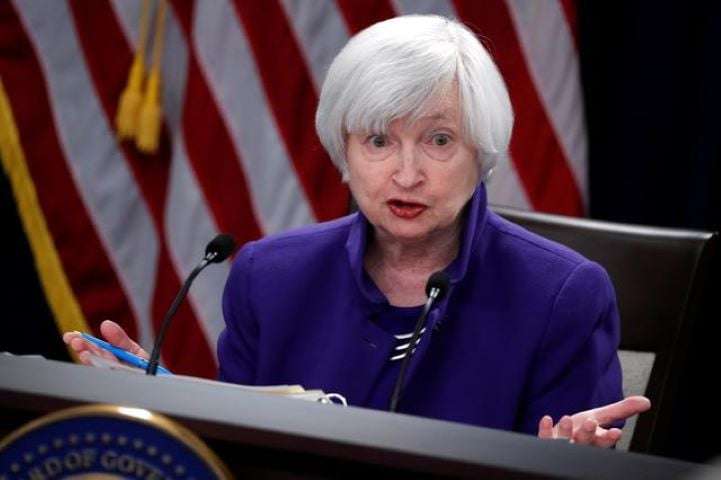Introduction
The election of Republican Donald Trump as the next US president has raised concerns over the fiscal health of the United States. According to Moody’s, the rating agency, the fiscal risks are higher due to the anticipated policy measures and the likely composition of Congress. The expected increase in budget deficits and government debt levels under Trump’s administration, compared to Democrat Kamala Harris, has led to significant market reactions. This article delves into the implications of Trump’s victory on US fiscal health, the anticipated policy changes, and the potential long-term effects on the US sovereign credit profile.
Fiscal Health Concerns
Projected Increase in Budget Deficits
Moody’s has highlighted the likelihood of rising budget deficits under the Trump administration. Both Trump and Harris were expected to add to the US debt, but projections indicated that Trump’s policies would result in a larger increase. This has raised alarms about the sustainability of the US fiscal position.
Impact of Trump’s Economic Plans
Trump’s proposed economic plans, including tax cuts and tariffs, are anticipated to spur faster economic growth. However, these measures are also likely to lead to higher inflation and wider budget deficits. The financial markets have already reacted, with a selloff in government bonds reflecting these concerns.
Tax Cuts
The proposed tax cuts are aimed at stimulating economic growth by increasing disposable income for individuals and businesses. However, these cuts are also expected to reduce government revenues, thereby increasing the budget deficit.
Tariffs
The introduction of tariffs as part of Trump’s trade policy is designed to protect domestic industries. While this might support local businesses, it could also lead to retaliatory measures from trading partners, potentially disrupting international trade and increasing costs for consumers.
Composition of Congress and Policy Implementation
Republican Control
As of the latest updates, Trump’s Republicans are poised to gain control of both chambers of Congress. This political configuration could facilitate the swift implementation of Trump’s policy agenda.
Policy Shifts
With Republican dominance in both the Legislature and the Executive, there is a higher probability of abrupt and sweeping changes in key policy areas such as tax, trade, immigration, and climate.
Risks to Fiscal Strength
Moody’s has expressed concerns that without measures to curb fiscal deficits, the federal government’s fiscal strength could deteriorate. The anticipated policies under Trump’s administration are seen as increasing the risks to US fiscal health.
Moody’s Rating and Outlook
Credit Rating Outlook
Moody’s currently maintains a triple-A rating for the US government but had lowered the outlook to “negative” from “stable” in the previous year. The agency typically reviews and resolves outlooks within 18 to 24 months, potentially leading to a rating downgrade if fiscal conditions worsen.
Potential Impact of Policy Shifts
The rapid implementation of Trump’s policies could significantly affect various sectors, including manufacturing, technology, and retail. The changes in tax, trade, immigration, and climate policies are expected to create uncertainties and risks for these industries.
Long-term Fiscal Implications
Sovereign Credit Profile
The US sovereign credit profile is likely to face increased pressure due to the anticipated fiscal policies. Moody’s has warned that the federal government’s weakening fiscal strength will weigh on the credit profile, especially if deficit reduction measures are not implemented.
Market Reactions
The financial markets have already responded to the expected fiscal changes, with a notable selloff in government bonds. This reflects investor concerns about the potential for higher inflation and increased budget deficits.
Conclusion
The election of Donald Trump as the next US president has heightened concerns about the country’s fiscal health. Moody’s has pointed out the risks associated with Trump’s proposed policies and the likely composition of Congress. The anticipated tax cuts and tariffs are expected to spur economic growth but also lead to higher inflation and wider budget deficits. The potential for swift policy shifts under Republican control adds to the uncertainties and risks facing the US fiscal position. Moody’s continues to monitor the situation closely, with the possibility of a rating downgrade if fiscal conditions deteriorate further.
FAQs
1. What are the main concerns about US fiscal health under Trump’s administration?
The primary concerns include rising budget deficits, increasing government debt levels, and higher inflation due to proposed tax cuts and tariffs.
2. How might Trump’s policies affect different sectors of the economy?
Trump’s policies could lead to abrupt changes in tax, trade, immigration, and climate policies, affecting manufacturing, technology, and retail sectors significantly.
3. What is the current outlook on the US sovereign credit rating by Moody’s?
Moody’s has a triple-A rating for the US government but had downgraded the outlook to “negative” from “stable,” indicating potential risks to fiscal strength.
4. How has the market reacted to Trump’s election victory?
There has been a selloff in government bonds, reflecting concerns about higher inflation and wider budget deficits under Trump’s administration.
5. What measures could mitigate the risks to US fiscal health?
Implementing policy measures to limit fiscal deficits, such as reducing spending or increasing revenues, could help mitigate the risks to US fiscal health.
ALSO READ:
https://flarenews.pk/2024/11/09/punjab-doubles-restrictions-as-multan-aqi-tops-2000/



